- Home
- Larry McMurtry
Custer Page 5
Custer Read online
Page 5
LIBBIE CUSTER, 1862.
LIBBIE IN HER WEDDING DRESS, 1864.
GEORGE AND LIBBIE.
GEORGE AND LIBBIE, 1865
CUSTER AND LIBBIE RELAXING WITH FRIENDS.
THE KANSAS PLAIN IN THE 1870s was probably more popular with sporting people and the curious rich than it has ever been since. That was mainly because of the surge of railroads and the distinctive comfort of the private car—the Learjets of their day. Tycoons, newspapermen, and, on rare occasions, even royalty seemed compelled to shoot the large, stupid American bison. Hunting them brought a little color into the lives of the many soldiers who had to find something to do in places that might fairly be described as raw.
Undoubtedly the most important visitor during the 1870s was the Grand Duke Alexis of Russia, third son of Czar Alexander II. The Grand Duke was tall, like his father, but he was myopic, and far from being the sharpest knife in the Romanov drawer. Though his main interest was in chorus girls or their equivalent, he liked a little sightseeing—the Kentucky-based Custers showed him Mammoth Cave—he did especially want to shoot a buffalo.
A group was soon formed to assist the monarch’s hunt. The Custers were part of it, but the real hero of the royalty hunt was Buffalo Bill Cody himself, who in his years as a showman became quite comfortable with royalty, including (this came later) Queen Victoria. Cody not only put the Grand Duke in reach of the buffalo, he also, at some risk to himself, went into the country of the Brulé Sioux and persuaded their leader, Spotted Tail, to bring his warriors and do a little war dancing for the visitor. Spotted Tail (Crazy Horse’s uncle) was not loath to put on a show for the whites if the presents were generous, as they were in the case of the Romanov’s visit.
The Grand Duke’s shooting was so erratic that there was some danger to the horse herd; Cody may actually have shot the buffalo the Grand Duke thought he killed. Nine buffalo were killed in all, some probably with an assist from the very experienced Cody.
Elizabeth Custer was there too. In fact the Grand Duke liked the Custers so much that he invited them to New Orleans with him. They accepted and a good time was had by all. It was probably better than sitting around watching the fissures in their marriage widen.
CUSTER WITH GRAND DUKE ALEXIS OF RUSSIA.
QUIET, SHADY ELIZABETHTOWN, KENTUCKY, MIGHT have seemed an ideal place for the Custers to settle down and repair their frayed relationship; but it didn’t work out that way. For couples deep in the marital stews no place is likely to prove ideal. Both Custers read a great deal; it was one way for couples to ignore one another.
Lexington, Kentucky, was home to America’s version of the sport of kings. Custer, of course, seized every opportunity to get out to the races. He was irked that his beloved 7th Cavalry was in the south, fighting the Ku Klux Klan and generally helping out with Reconstruction. It was to come back to him a little later on.
Libbie observed that a good many of her fellow army wives were beginning to eat too much and get fat—she took more care with her diet but eventually she grew plump anyway. By that time though she was the famous Widow Custer.
In Washington to seek a livelier post, Custer twice tried to see President Grant, but Grant, who had no patience with Custer, managed to elude him.
When relief finally came for Custer it was because the Northern Pacific Railroad was pushing into Indian country near the Yellowstone and was often under attack, the attackers mostly being the Sioux. Custer was finally summoned to the Dakotas, working out of Fort Abraham Lincoln, across the river from Bismarck.
To his chagrin, Custer was not put in charge of this caretaker expedition. This plum went to General David Stanley, who disliked Custer about as much as Custer disliked him. Custer’s innocent cookstove was the cause of many quarrels. Custer wouldn’t give it up and Stanley couldn’t stand it.
When the Custers arrived, in 1873, Custer immediately went hunting and killed an antelope whose blood unfortunately dripped on some doughnuts he had been saving for Libbie. Could this be an omen? Could the comet that showed up later in the year be an omen? Custer himself was not superstitious; the comet was probably just a comet.
Custer was aware, as was General Stanley, that the surveying party was treading pretty close to prohibited land: in particular the Black Hills, Paha Sapa, holy to the Sioux.
CUSTER’S HOME AT FORT ABRAHAM LINCOLN, NORTH DAKOTA.
In 1868 the army, aware of its own weakness—there were those burned forts—made a treaty giving the Black Hills to the Sioux in perpetuity, which meant forever.
There had been, by this time, several hints about gold in the Black Hills; at first these were tentative hints, not enough to spark a full-scale gold rush, something that certainly would come if the gold appeared to exist in commercial quantities—as in time it did.
The Northern Pacific was punched through without serious battle. Custer amused himself by catching small animals that he sent to the New York zoo. He caught a porcupine and a wildcat, both of which were soon traveling eastward. An elk tore up several dogs. The elk was dispatched and Custer made a stab at learning taxidermy, an elk being a lot of animal to practice on.
It may be that, for a time, Custer wavered about the Black Hills. He knew that if there was gold there, there would be a war for it. Should he let the Sioux keep their holy place, or should he discover the gold himself, becoming overnight a national hero?
If in his depths he aspired to be president, a likely time for this aspiration to surface would be 1874, when Custer was at last able to lead his own expedition into Paha Sapa.
CUSTER IN HIS STUDY.
THE 1868 TREATY GIVING THE Sioux the Black Hills was known to people who wanted to repeal it merely as “That Pact.” The public clearly had the right to Black Hills gold, if there was any. At least it was felt that there should be a second expedition, to find out the truth about the gold. This was the famous 1874 expedition, commanded, to his great delight, by General George Armstrong Custer.
In case anybody doubted that they were coming they took along a sixteen-piece band. Just before he departed from Fort Abraham Lincoln the General posted a long letter to the New York World in which he had this to say:
We are goading the Indians to madness by invading their hallowed grounds, and throwing open to them the avenues to a terrible revenge, whose costs would far outweigh any scientific or political benefit possible to be extracted from it under the most favorable circumstances.
But then this perverse man proceeded to lead just such an expedition; and he did find substantial evidence of just what the expedition had been looking for in the first place. It wasn’t visible in the roots of the grass, as Custer had casually predicted, but the gold was there, and, in the next few decades, millions of dollars’ worth of it would be mined. Custer went, with no loss of sleep, from being a responsible prophet to being in essence the area’s first real estate broker.
There would be many more.
Custer’s next consideration was how to announce this news. He didn’t really need to emphasize his own contribution, since he was already thought of as the man who found the gold.
Laramie, where there was the nearest telegraph line, was nearly one hundred miles away, and there were many hostiles between Custer and the telegraph line. In the end he entrusted this important news to Lonesome Charley Reynolds, his most reliable scout.
CUSTER’S WAGON TRAIN EN ROUTE TO THE BLACK HILLS.
CAMP AT HIDDEN WOOD CREEK.
CUSTER’S BLACK HILLS EXPEDITION WITH FRED GRANT, 1874.
Lonesome Charley prudently traveled at night, taking four days for the trip. He carried a canvas mailbag with these words tacked on:
Black Hills Express
Charley Reynolds Manager
Connecting with all points East, West, North, South
Quick rates; quick transit
We are protected by the 7th Cavalry
IN THE BLACK HILLS.
Well, protected for the next two years, maybe. Lonesome Charley sho
uld have realized that he could not really afford the careless Custer, whom he died with at the Little Bighorn.
Once he heard of Custer’s coup, Grant quickly called his military men in. It was obvious that the treaty of 1868 was now so much wastepaper: the rush to the Black Hills was now unstoppable, unless the Indians stopped it by killing so many miners that the whites gave up—this was very unlikely, although the Indians did kill a great many.
A FAR-SEEING CONSIDERATION—THAT FUTURE LEGALITIES might eventually favor the red man—promped the government to eventually try to simply buy back the Black Hills. There was yet another conference, but Crazy Horse spiked it immediately by sending an emissary to say that he would kill anybody who sold even an acre of the Black Hills. The emissary was Little Big Man, the same who would hold Crazy Horse’s arms as he was being bayoneted in Fort Robinson. The Little Big Man of Thomas Berger’s novel was someone else.
This sale did not proceed. A second effort in 1876 ended inconclusively. At the time the Battle of the Little Bighorn occurred the status of the Black Hills was very much in dispute.
The American masters and commanders were ruthless men. Grant, Sheridan, Sherman, and the rest had seen Shiloh, Vicksburg, Gettysburg, and the Wilderness. All had witnessed great carnage, but they were sensitive to the fact that solemnly making a treaty and reneging on it five years later smacked of dishonorable behavior.
Grant and his friends eventually adopted a see-no-evil speak-no-evil policy which essentially ignored the problem of the treaty. The public debate was extensive, and somewhat one-sided: most Americans emphatically favored taking back the Black Hills and digging out that gold. And if the Sioux didn’t like it, they could lump it.
Only a few foresaw the day when the Sioux would be educated people who could hire pricy lawyers to represent them.
Clarity, if not justice, was attained the next year, when the whites simply took back those famous hills.
As I mentioned earlier, the journalist Alex Shoumatoff reckoned that the United States had made 354 treaties and broken them all. It is possible to see the whole continent, from Point Barrow to the Golden Gate, as one big land grab. Wavering over the Black Hills and then taking them is the type of process that had occurred many times—always with the same result.
Throughout 1875 travel by whites in the Black Hills was an extremely chancy thing. The government took a hands-off policy: anyone who wanted to head into those hills was taking a big chance, but the discoveries at first were rich enough to keep the miners coming. The extralegal process by which we took back the Black Hills was clearly a disgrace.
Tales of miners coming in with coffeepots full of gold were mostly false but still widely publicized.
Custer went home to Libbie a national hero again. What Libbie felt about it is not known. In any case he wasn’t home for long.
MY PARTNER, DIANA OSSANA, AND I were given a blessing ceremony in which we were brushed with the three eagle feathers the great Comanche Quanah Parker carried when he brought his people onto the reservation in 1875. We were conscious of having received a great honor.
Ranald Mackenzie himself met a sad fate. One night before he was to be married to a Texas lady, he got into a saloon brawl, was soundly beaten and left outside all night, tied to a wagon wheel. In fact he went insane that night and never recovered. His bride-to-be never recovered either. That great cavalry officer who defeated Dull Knife’s Cheyenne in 1877 was never to regain his sanity; he lived out his life in an asylum.
RANALD MACKENZIE.
Evan Connell says that Kit Carson led Mackenzie to the Palo Duro, but this is a rare mistake. Kit Carson died in 1868, a month after the death of his beloved wife, Josefina. Kit did participate in the First Battle of Adobe Walls. His commander, James Carleton, ordered Kit to clean out the Indians surrounding the old trading post, but when Carson arrived he found too many Indians and only escaped by firing the grass.
The Indians called Mackenzie Bad Hand and they respected him far above most white soldiers. After all he fought them in their place and no one else had done that.
As an officer Mackenzie was similar to Custer. Both thought little of defying expected behavior. Mackenzie was far more stoical than Custer. The latter loved creature comforts. Mackenzie was so indifferent to comfort that his men sometimes draped blankets over him to keep him from freezing in bitter weather, of which there was no shortage.
Mackenzie, with no written order, took his troops across the Rio Grande to rout the Lipan Apaches, who were raiding from what they thought was a secure base. His victory over Dull Knife of the Cheyenne, in the winter of 1876, was the one significant victory in the confused and clumsy efforts to punish the tribes that wiped out Custer and his men. The night of the attack was so cold that eleven Cheyenne babies froze; the Indians were shocked that the whites would fight in such weather. The soldiers, following the example of both Crook and Custer, destroyed all the provender in the village, not even having the foresight to save some of the abundant buffalo meat for themselves.
Custer surely knew, as he approached his death, that there were a lot of Indians ahead of him. But the dust the horses raised would have prevented him from realizing that the combined encampment stretched some four miles. In no encounter during his life on the plains would he have seen even a tenth this many Indians.
He did realize, suddenly, that he was in trouble. He scribbled a note to Benteen, which he handed to the Italian trumpeter John Martini, whose English was not trustworthy:
Come on, be quick. Be quick.
Bring packs.
CUSTER’S LAST MESSAGE.
Historians consider it to be a note missent: Benteen had nothing to do with the pack animals: those were under the command of officer Thomas McDougall.
Custer, realizing that he was in real trouble, may not have been thinking too clearly.
The note survives, and is now in the library at West Point.
THE VIGOR WITH WHICH THE U.S. Army pressed the Red River War, against not very many savages and in mostly inhospitable climes, suggests that the government was at last ready to play the endgame, finally and thoroughly. But they didn’t really do it effectively. The biggest battle—Custer’s—was won by the eventual losing side.
If one takes a literary rather than a historical view of the great battle one might suggest that the Battle of the Little Bighorn is the point at which the narrative of American settlement ends.
That the settlement had been successful was never seriously questioned again, not as the Indians contested it that hot day, June 25, 1876, by a little river slicing through the rolling plains of southern Montana. The army chased Indians around the plains for another two years with few serious confrontations. Mackenzie had already whipped the Comanches in the Palo Duro Canyon. In Arizona both Crook and Miles had some trouble with the Apaches, but when Geronimo finally came in he had only eighteen warriors with him, a few more than Custer slew on the Washita. Geronimo might make a life in the mountains of Mexico, as he did for a time, but he was never going to win his war.
Whether one starts in the far northeast with Cabot, or in Virginia with John Smith, or in Mexico with Cortéz and Coronado, the natives, over and over again, are invaded and eventually lose their culture.
The wonder is that this one reversal—the Little Bighorn—in which the ultimate losers win, is so rare. It nearly happened to Lewis and Clark when they were braced by the Teton Sioux near the Mandan villages. Fortunately the captains had a cannon and were prepared to use it.
This provides an odd link to Custer, who, famously, was offered Gatling guns, but passed on them because he knew they would slow him down.
There is a huge amount of native prophecy about the arrival of these white people. Even as early as the sixteenth century native preachers were preaching about the destruction of the whites and the return to the paradise that had been theirs before they came.
Then the Little Bighorn happened and the Indians killed the arch-invader, and so ends the American
settlement narrative, with dying men and horses on a dusty plain, a place far different from the places most Americans were by then living their lives.
A complex justice evolved on that battlefield, a justice that, years later, was still being debated. Custer’s comeuppance became America’s comeuppance, for three centuries of shabby treatment of the red man, the taking of the Black Hills being merely the latest and most striking example. Custer’s defeat was the nation’s defeat, and, ironically, the Indians’ defeat as well. For three centuries the Indians had mattered. They had a secure place in the American narrative.
And then they didn’t. It was very strange. Something was over, but neither the Indians nor the whites knew what.
People mourned, and yet could not say quite what they mourned.
So intense was the publicity following the Little Bighorn that when the famous gunfighter Wild Bill Hickok was shot down in Deadwood, South Dakota, the nation, usually attentive to gunfighters, scarcely noticed.
CUSTER’S EXPEDITION ON THE MARCH.
IN THE LATE 1970S, NOT quite one hundred years after the battle, I was in Montana working on a movie eventually called Montana; it wasn’t made until fifteen years after I wrote my drafts. I stayed in Lame Deer, the northern Cheyenne headquarters town, for two weeks. The movie was about the opposition to strip mining, but the time I spent in Montana was not so much preparation for writing a movie as it was for writing this book.

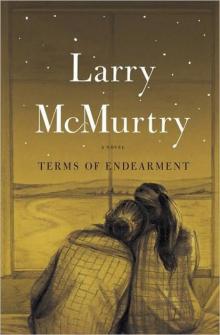 Terms of Endearment
Terms of Endearment Some Can Whistle
Some Can Whistle All My Friends Are Going to Be Strangers
All My Friends Are Going to Be Strangers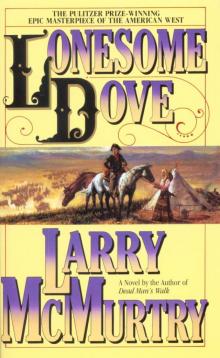 Lonesome Dove
Lonesome Dove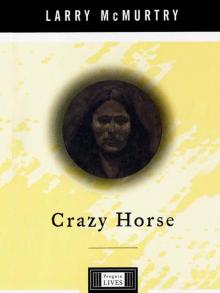 Crazy Horse: A Life
Crazy Horse: A Life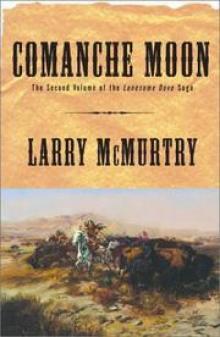 Comanche Moon
Comanche Moon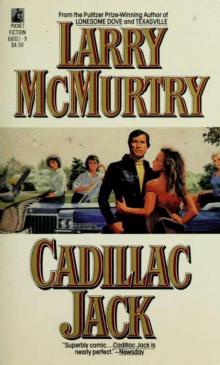 Cadillac Jack
Cadillac Jack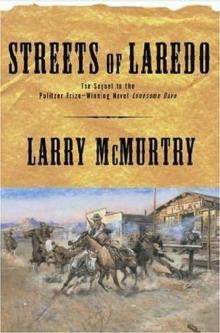 Streets of Laredo
Streets of Laredo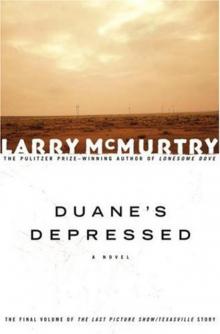 Duane's Depressed
Duane's Depressed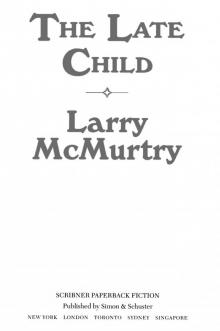 The Late Child
The Late Child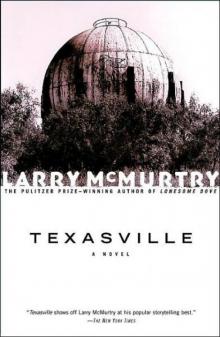 Texasville
Texasville Rhino Ranch
Rhino Ranch Pretty Boy Floyd
Pretty Boy Floyd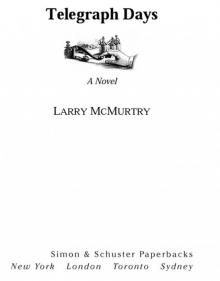 Telegraph Days
Telegraph Days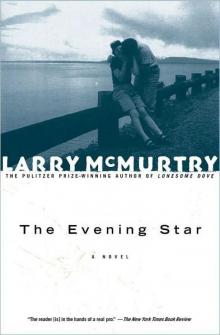 The Evening Star
The Evening Star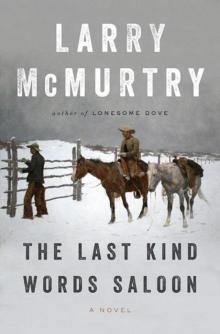 The Last Kind Words Saloon
The Last Kind Words Saloon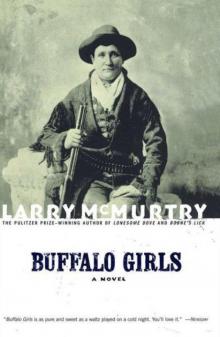 Buffalo Girls
Buffalo Girls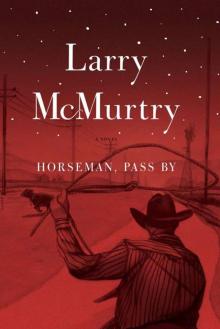 Horseman, Pass By
Horseman, Pass By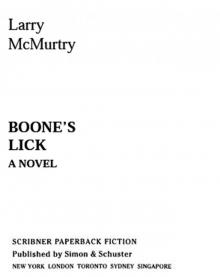 Boone's Lick
Boone's Lick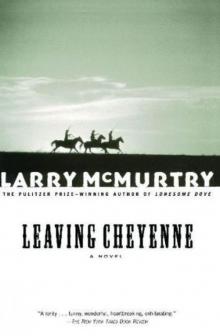 Leaving Cheyenne
Leaving Cheyenne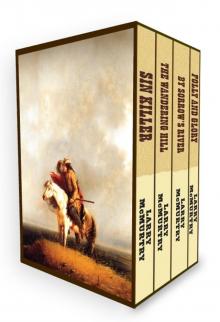 Sin Killer
Sin Killer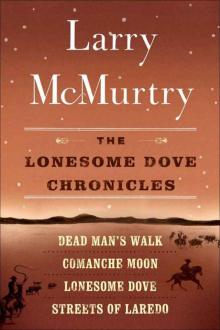 The Lonesome Dove Chronicles (1-4)
The Lonesome Dove Chronicles (1-4)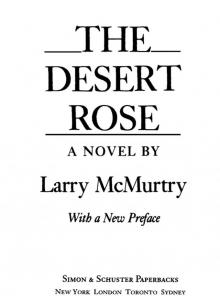 The Desert Rose
The Desert Rose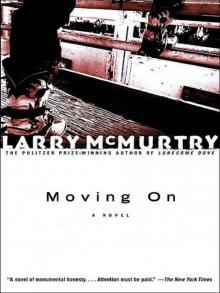 Moving On
Moving On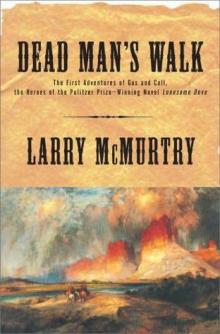 Dead Man's Walk
Dead Man's Walk The Last Picture Show
The Last Picture Show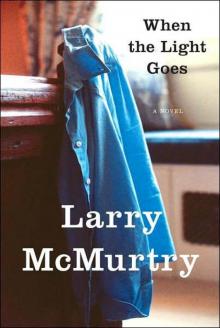 When the Light Goes
When the Light Goes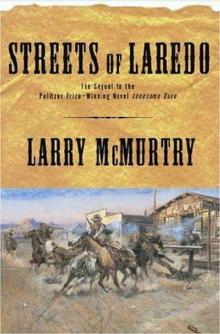 Streets Of Laredo ld-2
Streets Of Laredo ld-2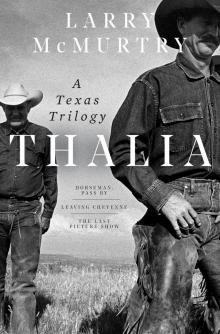 Thalia
Thalia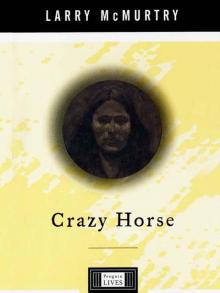 Crazy Horse
Crazy Horse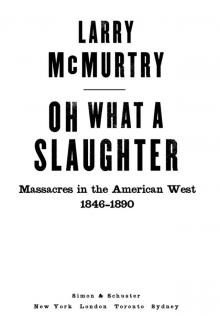 Oh What a Slaughter
Oh What a Slaughter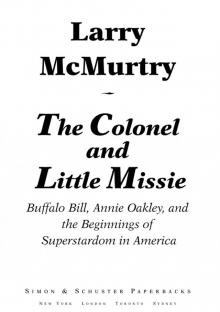 The Colonel and Little Missie
The Colonel and Little Missie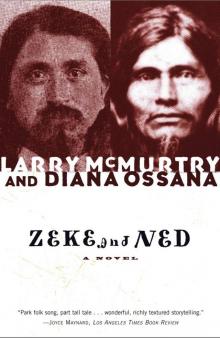 Zeke and Ned
Zeke and Ned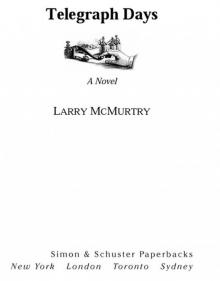 Telegraph Days: A Novel
Telegraph Days: A Novel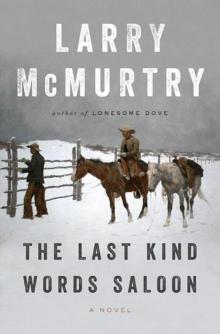 The Last Kind Words Saloon: A Novel
The Last Kind Words Saloon: A Novel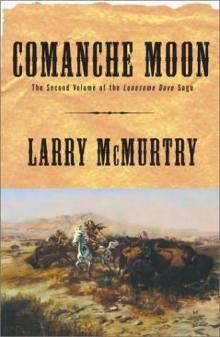 Comanche Moon ld-4
Comanche Moon ld-4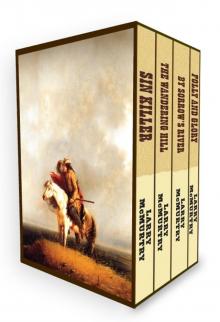 The Berrybender Narratives
The Berrybender Narratives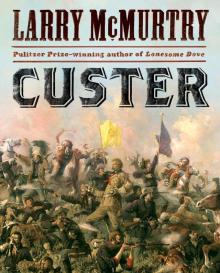 Custer
Custer